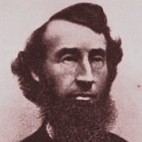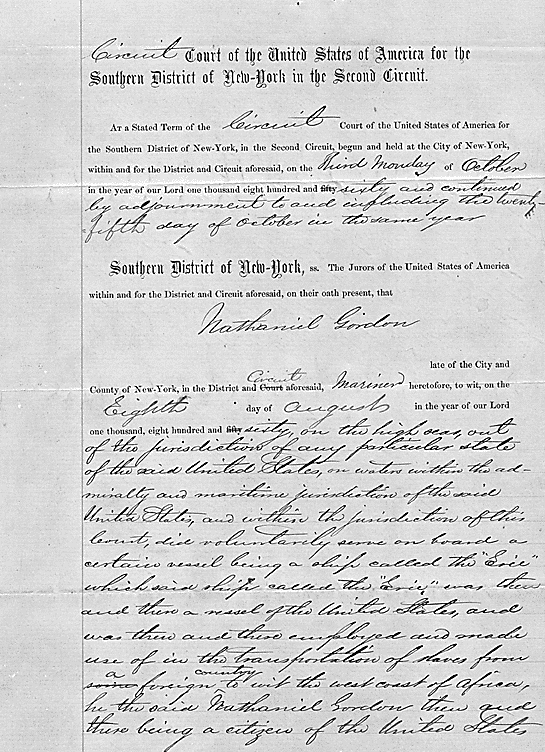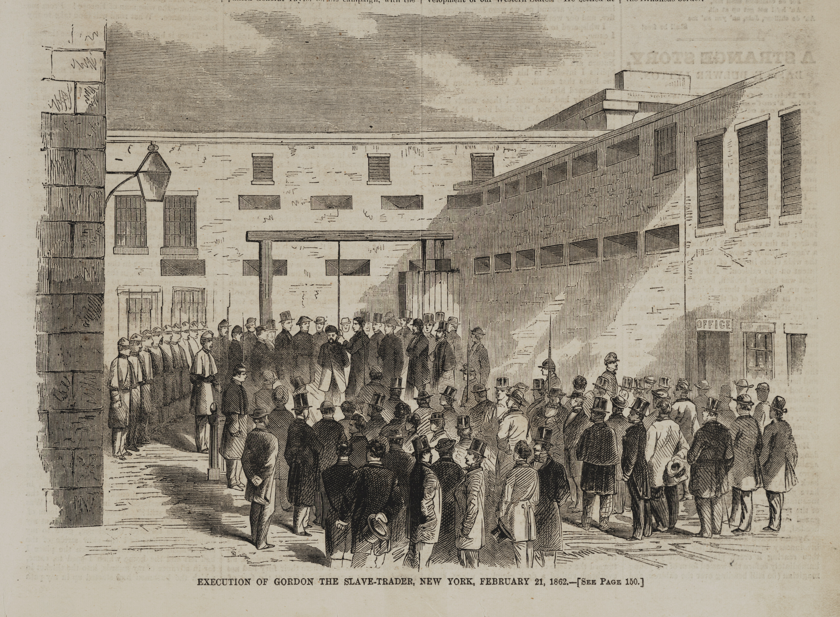
1826 - 1862
Nathaniel Gordon
Summary
Name:
Nathaniel GordonYears Active:
1848 - 1860Birth:
February 06, 1826Status:
ExecutedClass:
Mass MurdererVictims:
897Method:
Suffocation / Mass death from inhumane slave transport conditionsDeath:
February 21, 1862Nationality:
USA
1826 - 1862
Nathaniel Gordon
Summary: Mass Murderer
Name:
Nathaniel GordonStatus:
ExecutedVictims:
897Method:
Suffocation / Mass death from inhumane slave transport conditionsNationality:
USABirth:
February 06, 1826Death:
February 21, 1862Years Active:
1848 - 1860Date Convicted:
November 9, 1861bio
Nathaniel Gordon was born on February 6, 1826, in Portland, Maine. He came from a maritime family—his father had faced charges for slave smuggling during Gordon’s childhood but was never executed. This early exposure to illegal maritime trade likely influenced Gordon’s path into slave trafficking. As a young man, he pursued a career in shipping and eventually owned his own vessels. He married Elizabeth, and they had a son named Nathaniel.
Despite having a family, Gordon became involved in the transatlantic slave trade—a criminal and morally repugnant practice that had already been outlawed in the U.S. Even as international pressure against slavery grew, Gordon saw it as a lucrative business. His first run-in with the law was in 1848, when the U.S. Navy searched his vessel, Juliet. No charges were filed due to lack of evidence, though suspicions lingered.
Gordon continued slave trading throughout the 1850s. In 1851, as captain of the Camargo, he smuggled hundreds of Africans to Brazil. When pursued by the British navy, he burned the ship to destroy evidence and escaped by disguising himself in women’s clothing. On another voyage aboard the Ottawa, he transported enslaved Africans to Cuba—but only about 25% survived the journey. Gordon blamed a rival for poisoning them, yet he again burned the ship afterward, following a pattern of covering his tracks.
murder story
In July 1860, Gordon set sail aboard the Erie for West Africa. On August 7, at Sharks Point near the Congo River, he forcibly loaded 897 enslaved Africans onto the ship. Among them, only 172 were adult men and 162 women—the majority were children. Gordon intentionally targeted children, believing they were easier to control and less likely to revolt. The conditions aboard were inhumane: the captives were packed into cramped holds, exposed to the stifling tropical heat, and subjected to starvation, disease, and death.
Within hours of leaving the Congo, the Erie was captured by the USS Mohican, commanded by Sylvanus William Godon. A U.S. Navy prize crew was sent aboard. The captives were rerouted to Liberia, the American colony for freed slaves, but at least 29 died during the journey. Their bodies were dumped at sea.
The Erie was brought to New York, where Gordon and his crew were arrested. He refused a plea bargain offered by U.S. Attorney James Roosevelt—a $2,000 fine and two years in prison—believing he could escape punishment. However, the newly appointed U.S. Attorney Edward Delafield Smith took a hardline stance, determined to enforce the 1820 Piracy Law, which made slave trading a capital offense.

Gordon’s first trial in June 1861 ended in a hung jury, reportedly influenced by bribes. A retrial was quickly scheduled with a sequestered jury. His defense relied on far-fetched technicalities, claiming the Erie wasn’t an American ship, that Gordon wasn’t technically American, and that the Congo River was Portuguese territory. All arguments were rejected. Witnesses confirmed Gordon was the Erie’s captain and that he directly oversaw the transport of slaves.
On November 9, 1861, Gordon was found guilty of piracy for engaging in the slave trade. He was sentenced to death—the first and only person executed under that law.
Supporters petitioned President Abraham Lincoln for clemency, but Lincoln refused. Despite his reputation for mercy, Lincoln saw Gordon’s crime as unforgivable: "I never will pardon [a man] who, for paltry gain… can rob Africa of her children to sell into interminable bondage."
Though Lincoln granted Gordon a two-week delay for spiritual preparation, the sentence stood.
The day before his scheduled hanging, Gordon attempted suicide with strychnine. Doctors spent hours saving him through stomach pumping, forced feeding, and whiskey infusions. When he awoke, he cried, “I've cheated you! I've cheated you!”

But he survived and was hanged at Tombs Prison in New York City on February 21, 1862. His last words to the executioner were: “Make short work of it now, Bill. I'm ready.”
Nathaniel Gordon remains the only American ever executed for slave trading, a grim legacy highlighting both the brutality of his crimes and the shifting tide of justice during the Civil War era.